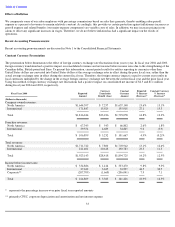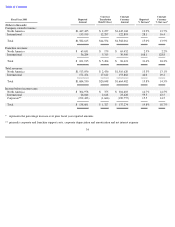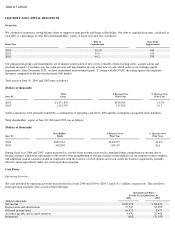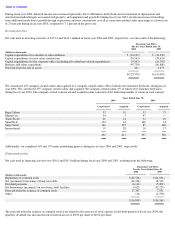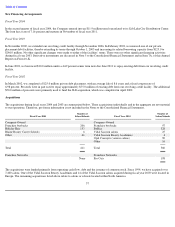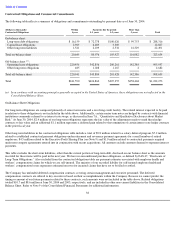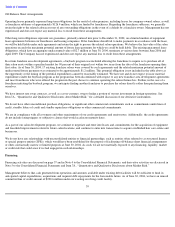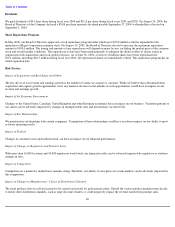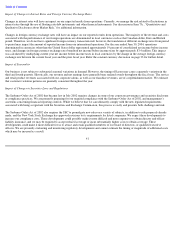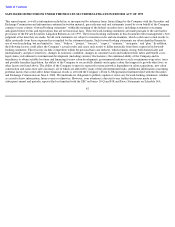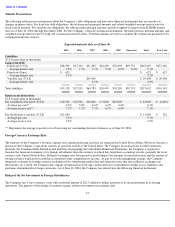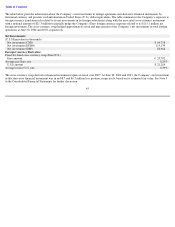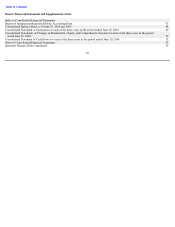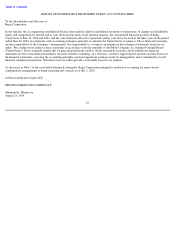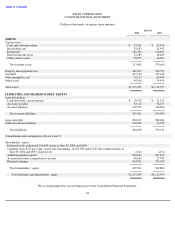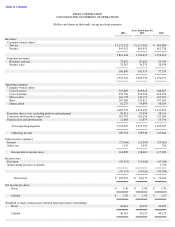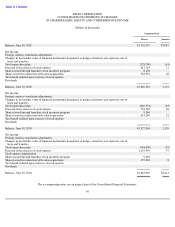Supercuts 2004 Annual Report Download - page 53
Download and view the complete annual report
Please find page 53 of the 2004 Supercuts annual report below. You can navigate through the pages in the report by either clicking on the pages listed below, or by using the keyword search tool below to find specific information within the annual report.
Table of Contents
Impact of Changes to Interest Rates and Foreign Currency Exchange Rates
Changes in interest rates will have an impact on our expected results from operations. Currently, we manage the risk related to fluctuations in
interest rates through the use of floating rate debt instruments and other financial instruments. See discussion in Item 7A., “Quantitative and
Qualitative Disclosures about Market Risk,” for additional information.
Changes in foreign currency exchange rates will have an impact on our reported results from operations. The majority of the revenue and costs
associated with the performance of our foreign operations are denominated in local currencies such as the Canadian dollar, Euro and British
pound. Therefore, we do not have significant foreign currency transaction risk; however, the translation at different exchange rates from period
to period may impact the amount of reported income from our international operations. For the year ended June 30, 2004, operations
denominated in currencies other than the United States dollar represented approximately 19 percent of consolidated net income before income
taxes, and changes in foreign currency exchange rates benefited net income before income taxes by approximately $3.4 million. This impact
was calculated by multiplying current year net income before income taxes in local currencies by the change in the average foreign currency
exchange rate between the current fiscal year and the prior fiscal year. Refer the constant currency discussion on page 33 for further detail.
Impact of Seasonality
Our business is not subject to substantial seasonal variations in demand. However, the timing of Easter may cause a quarterly variation in the
third and fourth quarters. Historically, our revenue and net earnings have generally been realized evenly throughout the fiscal year. The service
and retail product revenues associated with our corporate salons, as well as our franchise revenues, are of a replenishment nature. We estimate
that customer visitation patterns are generally consistent throughout the year.
Impact of Changes in Securities Laws and Regulations
The Sarbanes-Oxley Act of 2002 that became law in July 2002 requires changes in some of our corporate governance and securities disclosure
or compliance practices. We are presently preparing for our required compliance with the Sarbanes-Oxley Act of 2002, and management’s
assertions concerning financial reporting controls. While we believe that we can ultimately comply with the new legislated requirements
associated with being a registrant with the Securities and Exchange Commission, this process is costly and presents both challenge and risk.
The Sarbanes-Oxley Act of 2002 also requires the SEC to promulgate new rules on a variety of subjects, in addition to rule proposals already
made, and the New York Stock Exchange has approved revisions to its requirements for listed companies. We expect these developments to
increase our compliance costs. These developments could possibly make it more difficult and more expensive to obtain director and officer
liability insurance, and we may be required to accept reduced coverage or incur substantially higher costs to obtain coverage. These
developments could make it more difficult for us to attract and retain qualified members of our board of directors, or qualified executive
officers. We are presently evaluating and monitoring regulatory developments and cannot estimate the timing or magnitude of additional costs
which may be incurred as a result.
41


